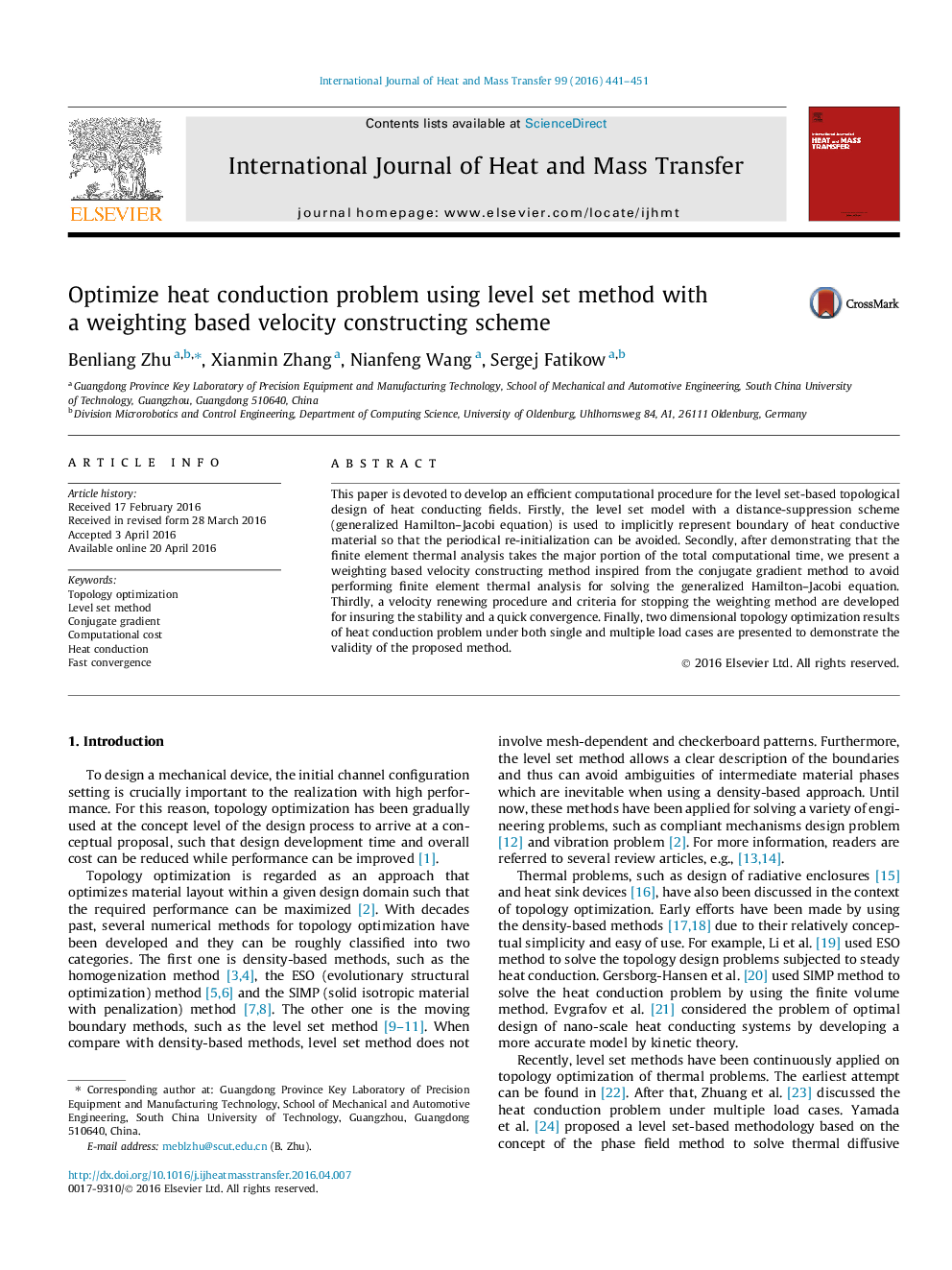| Article ID | Journal | Published Year | Pages | File Type |
|---|---|---|---|---|
| 656467 | International Journal of Heat and Mass Transfer | 2016 | 11 Pages |
•An efficient algorithm is developed for topology optimization of heat conductive problem.•We propose a strategy to ensure stability and fast convergence.•The overall computational efficiency can be greatly improved.
This paper is devoted to develop an efficient computational procedure for the level set-based topological design of heat conducting fields. Firstly, the level set model with a distance-suppression scheme (generalized Hamilton–Jacobi equation) is used to implicitly represent boundary of heat conductive material so that the periodical re-initialization can be avoided. Secondly, after demonstrating that the finite element thermal analysis takes the major portion of the total computational time, we present a weighting based velocity constructing method inspired from the conjugate gradient method to avoid performing finite element thermal analysis for solving the generalized Hamilton–Jacobi equation. Thirdly, a velocity renewing procedure and criteria for stopping the weighting method are developed for insuring the stability and a quick convergence. Finally, two dimensional topology optimization results of heat conduction problem under both single and multiple load cases are presented to demonstrate the validity of the proposed method.
